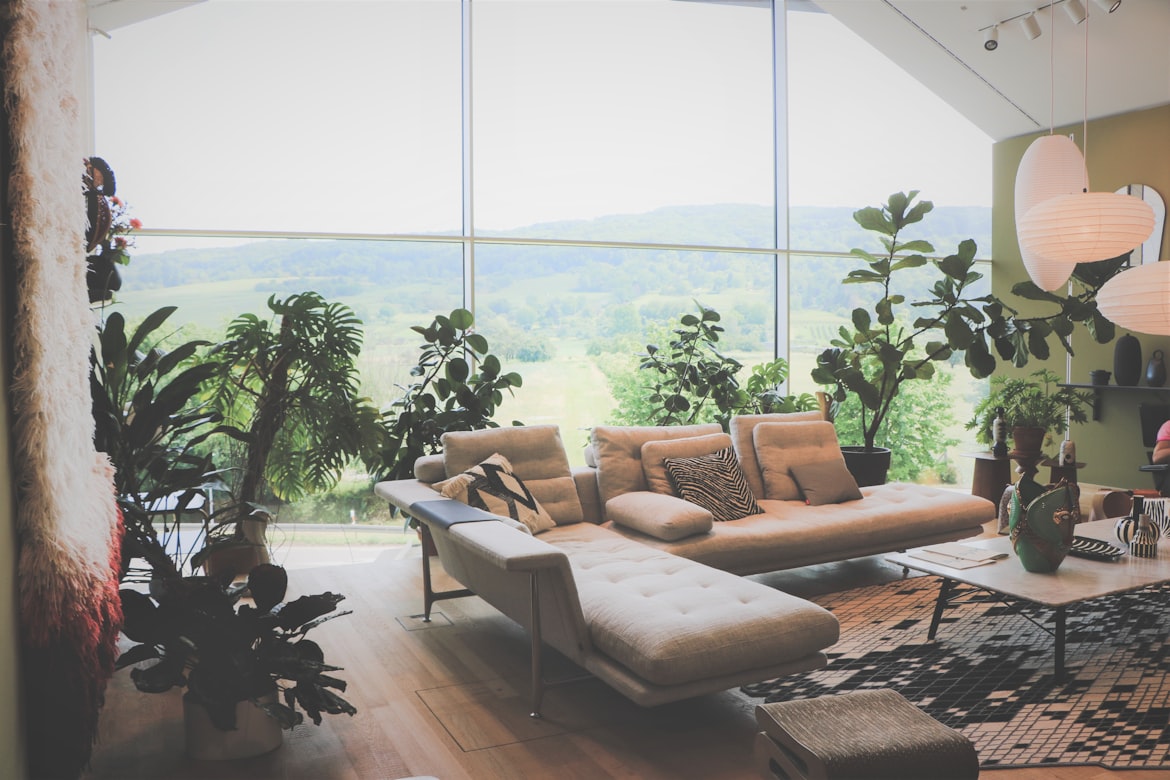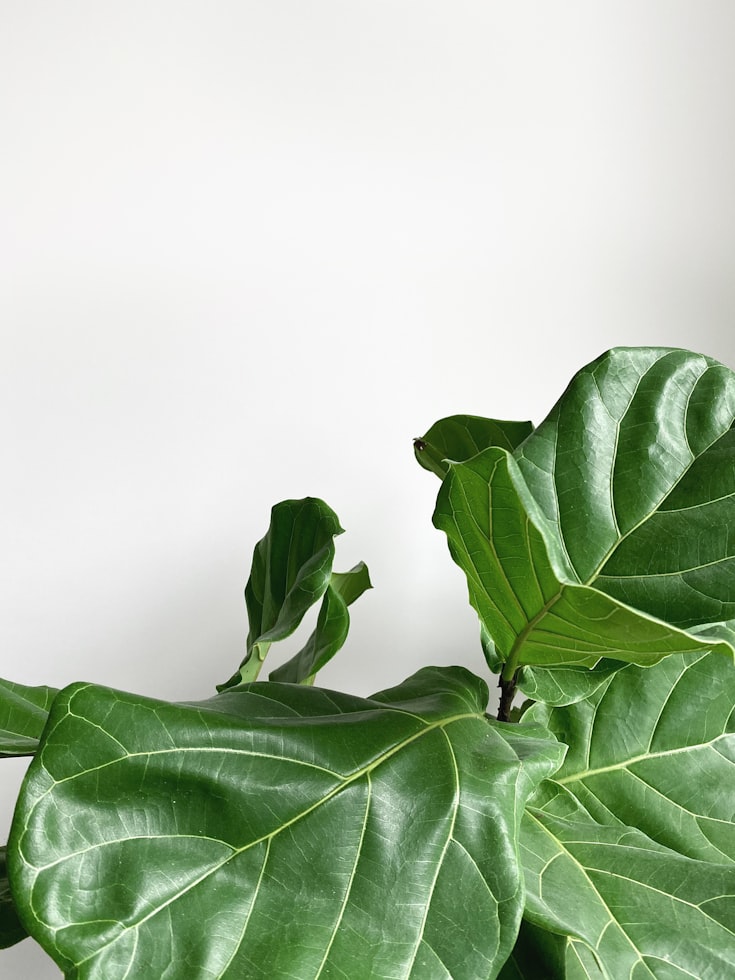How To Grow Indoor Plants Successfully
Densely inhabited regions that stretch for kilometers from metropolitan centers have replaced much of nature's beautiful charm. This visual pollution has an impact on all of us and makes us want for a closer relationship with nature. We spend around 90% of our time indoors. Interior plants are an excellent method to create appealing and relaxing environments while also improving our overall well-being. Furthermore, houseplants may be a relaxing activity that also helps to filter the air in our homes. Indoor plants capture and absorb a variety of contaminants in addition to converting carbon dioxide to oxygen. Many of these chemical compounds, which are released into our air through a process known as "off-gassing," are found in common household and workplace goods.
To be a competent indoor gardener, you must first grasp how the interior atmosphere impacts plant development and how indoor gardening varies from outside gardening.
Plant Growth Affecting Factors
Light
Appropriate lighting is by far the most critical element impacting plant growth in interiors. Plants require light to develop and make food; in general, the more light available, the more food is produced for growth. Foot candles are the units of measurement for light. In a fully dark environment, one footcandle (ft-c) is the amount of light cast by a candle on a white surface 1 foot distant. On a bright day, outdoor light levels can range from 10,000 ft-c in the sun to 250 ft-c or less in the shadow of a huge tree.
The quantity of light in a specific area of your home varies depending on the presence of trees outside (which may shade at certain times), roof overhangs (which may shade at certain times), wall color (reflectance), window curtains, day length, time of day, and year.
Select plants for a certain place based on the approximate light levels in the area while shopping for indoor plants. The light needs of the plant will normally be included on the plant's label. Artificial light sources such as fluorescent and/or specific incandescent lights may be used to complement the natural light if the plant label specifies "high light" but the designated space in the home does not supply appropriate light.
Increase the amount of hours of light exposure—for example, 16 hours of light and 8 hours of darkness—can also assist. This increases the amount of hours that plants are exposed to light.
Because plants receive direct morning light from dawn until almost midday, windows with eastern exposure within the home often give the greatest light and temperature conditions for most indoor plant development. At these windows, footcandle values can range from 5,000 to 8,000. The direct sunlight fades from the room as the morning advances.
Because the house absorbs less radiant heat, an eastern room is cooler than a southern or western room. Because light from the east is colder than light from the south or west, it causes plants to lose less water.
The light and temperature conditions vary the most in windows with a southern exposure. For the majority of the daylight hours, the low winter sun beams across the chamber.
The sun rises at a steep angle in the morning and is high in the sky by noon in the summer, when the sun is further north than it is in the winter. Only at midday does direct light enter a south window. If the windows are covered by a large overhang, the sun may not be able to enter the room at all. On a hot summer day, the sun might reach 10,000 feet above sea level. A southern window with wide eaves on the outside, on the other hand, will get roughly the same amount of light as a window with a northern exposure. For most plants, southern and western exposures are interchangeable. Most plants, with the exception of those that have a strong affinity for northern exposure, can be planted in a room with southern exposure in the winter.
Northern-facing windows provide the least amount of light and the coldest temperature. The United States receives the majority of its sunshine from the south due to its location in the northern hemisphere. The northern exposure receives the least amount of light and heat throughout the year of the four.
Temperature
In indoor conditions, temperature is the second most critical element determining plant development. Because most medium indoor plants come from tropical and subtropical parts of the world, they can endure and thrive well in a temperature range of 58 degrees F to 86 degrees F.
The processes of photosynthesis and respiration connect temperature and light. Plant life's "yin and yang" - two halves of a circle — may be conceived of as these processes. Photosynthesis creates sugars and starch, which are subsequently broken down by respiration to provide energy for the growth and maintenance of existing tissues. The rate of respiration increases as the temperature rises. If the plant isn't creating enough sugars (as it is under low light), high temperatures may break down the sugars that are produced, leaving little to none for growth. Plants do not develop when there is inadequate light because maintenance takes precedence over growth. The plant will ultimately die if the amount of sugar generated is insufficient to keep it alive.
When sugar levels are low, the plant borrows nutrients and sugars from older leaves in order to keep young leaves alive. There are two possibilities for helping plants in an indoor environment: (1) Increase light levels to boost photosynthesis and sugar production, or (2) decrease nighttime temperatures to slow respiration and allow for greater sugar development.
What are the most likely temperatures in a home? During the summer, air conditioning that has been switched off at night or weekend thermostat settings that have been elevated result in night temperatures that are higher than acceptable. Lower night temperatures may occur from heating that has been switched off at night or weekend thermostat settings that have been decreased over the winter. Allowing temperatures to fall below 50 degrees F might cause chill damage to certain delicate foliage plants (e.g., Chinese Evergreen, Aglaonema). Lower leaf yellowing and/or defoliation are symptoms of chill damage.
The minimum and maximum temperature needs of plants differ. Cyclamen, Wonder Plant, Fatshedera, Japanese Aralia, and Fatsia are examples of cool-loving plants that thrive in areas where nighttime temperatures dip to the low 50s and daytime temperatures reach the 60s.
For optimal development, not all inside plants require the same temperature. Cast Iron Plant, Aspidistra, and ferns, for example, thrive at milder temperatures (72°F), whilst other tropical plants thrive in temperatures ranging from 90°F to 95°F. Indoors, such temperatures are rarely tolerated.
The optimal temperature range for indoor plants is 70°F to 80°F during the day and 65°F to 70°F at night.
Humidity Relative
The quantity of moisture in the air is measured as relative humidity. Relative humidity of less than 20% is considered low, 40 percent - 50% is medium, and more than 50% is high for indoor plants. Relative humidity is a critical component that is sometimes disregarded. The relative humidity in a greenhouse is at least 50%. When newly acquired plants are put in the 10–20 percent relative humidity found in most houses, rapid transpiration and water loss may occur. The majority of indoor plants are native to the tropics, where high relative humidity is the norm.
Water
One of the most crucial skills in plant care is knowing how to water. Too much water can smother plant roots, while too little water causes inconsistent and stunted development. The frequency of watering will be determined by the growth circumstances of the plants.
Improper watering produces a slew of issues. Saucer-style containers can lead to an excessive build-up of soluble salts (from the applied fertilizer). Plant roots can be damaged and growth can be slowed by high quantities of soluble salts. After irrigation, discard any water that has drained into the saucer and saturate the soil with huge amounts of water to remove the soluble salts that had collected. Feel the soil by inserting a finger an inch or two below the surface to determine when to water. No further water is required if the soil is still damp. Water meters or water gadgets are also available to make watering easier.
Nutrition
Many indoor gardeners have the same problem with fertilizer as they do with water: they want to provide too much for their plants. Any fertilizer applied, whether in liquid, powder, or tablet form, will breakdown in soil water and produce salts in the water, posing a risk of over-fertilization. When you over-fertilize, the soil's water gets so salty that it "burns" the plant's roots by eliminating water. Excess soluble salts build up as a yellowish crust on the growth medium's surface and/or along the container's rim.
Applying modest quantities of fertilizer as the plant grows is the key to fertilizing plants inside. The plant's requirement for additional fertilizer is restricted without new growth. A plant's requirement for fertilizer decreases throughout the winter when light levels are low. The plant's requirement for fertilizer rises throughout the summer, when light levels rise and the plant is actively developing. Use one-fourth of the label rate for monthly applications as a starting point. Fertilize every two weeks if the general color of the plant turns lighter green. Reduce the fertilizer rate if the new growth is dark green yet the leaves are tiny and the internodes appear longer than the older growth.
Indoor gardeners can choose from a variety of fertilizer mixes. Many fertilizers are available in formulae specifically tailored for indoor plants. To avoid over-fertilization issues, they often contain a smaller percentage of the needed mineral components.


